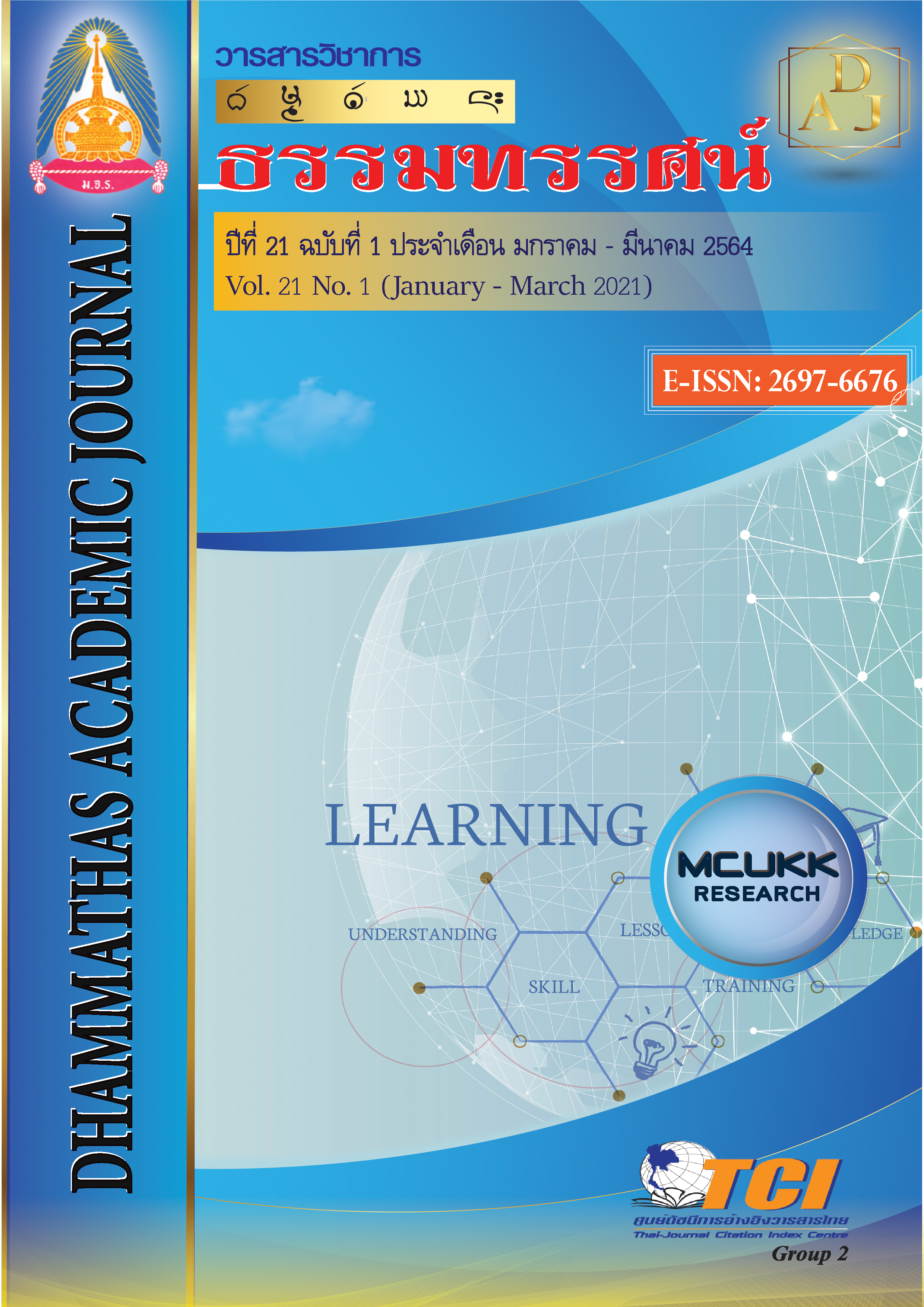Strengthening Health According to Sappurisadhamma 7 for Vanz boys in Khon Kaen Province
Main Article Content
Abstract
The objective of this research was to study and explore the use of Sappurisadhamma 7 principles for strengthening health of Vanz boys in Khon Kaen Province. This research model used mixed-method research, both quantitative method and the qualitative method, consisted of 2 steps: Step 1 was the quantitative research method. The sample group used in this step was a group of vanz boys living in various communities of Khon Kaen Province, totaling samples of 100 people by using a systematic random sampling. The questionnaire, there was a confidence value (r) = .88 and was returned 100 questionnaires, equivalent to 100.00 percent. Step 2 was the qualitative research method, using interview and focus group to find suggestions from 20 people living in Khon Kaen Province with ready-made computer programs and analyzing qualitative data with content analysis.
The research results were found that: The overall sample group used Sappurisadhamma 7 principles for strengthening health of vanz boys in Khon Kaen Province is moderate. It may be because that at present the knowledge of the benefits of exercise has been started to enhance people's health to have a stronger body, mind, intelligence and society through Buddhist principles. The results of the sample seminar were found that the most people in the community are based on the principle of being known to the community (Parisanyuta) and the principle of knowing people (Pukklapro-pranyuta) in the health promotion model which is important for helping each other. It also was relied on the personal style that people in the community have to manage themselves (Attanyuta), including being a well-informed person in promoting one's mental health (Kalanyuta) to develop oneself to have physical and mental health to be ready for the creation of good things for society.
Article Details
References
ชาญณรงค์ ฟูโคกสูง. (2560). ออกกำลังกายเพื่อสุขภาพ. เข้าถึงได้จาก http://program.npru.ac.th/pe/Exercise%20for%20Health(AT).html
นฤมล ราชบุรี. (2557). สัปปุริสธรรม 7: แนวคิดเชิงบูรณาการเพื่อการพัฒนาคุณภาพการศึกษาอย่างยั่งยืน. เข้าถึงได้จาก https://1th.me/2d1s
พระจํารัส ฐิตธมฺโม (สวาส โพธิกลาง). (2554). การประยุกต์ใช้หลักสัปปุริสธรรม 7 ในการบริหารจัดการชุมชน: กรณีศึกษา ชุมชนวัดใหม่พิเรนทร์ เขตบางกอกใหญ่ กรุงเทพมหานคร. (วิทยานิพนธ์พุทธศาสตรมหาบัณฑิต). ขอนแก่น: มหาวิทยาลัยมหาจุฬาลงกรณราชวิทยาลัย.
พระมหาสมควร สีสงคราม. (2550). การศึกษาความสัมพันธ์ระหว่างสัปปุริสธรรมและพละธรรมกับการปฏิบัติงานของผู้นำสถานศึกษากลุ่มเขตธนบุรีใต้ สังกัดกรุงเทพมหานคร. (วิทยานิพนธ์การศึกษามหาบัณฑิต). กรุงเทพฯ: มหาวิทยาลัยศรีนครินทรวิโรฒ.
พัชรินทร์ ศิริวิสุทธิรัตน์. (2552). แว้นบอย-สก๊อยเกิร์ล. กรุงเทพฯ: สำนักพัฒนาสุขภาพจิต กรมสุขภาพจิต กระทรวงสาธารณสุข.
ว.วชิรเมธี. (2560). ความรู้จักประมาณตนในสัปปุริสธรรม 7. เข้าถึงได้จาก https://goodlifeupdate.com/healthy-mind/dhamma/10428.html
สุริชัย หวันแก้ว. (2546). กระบวนการกลายเป็นคนชายขอบ Marginalization. กรุงเทพฯ: คณะกรรมการสภาวิจัยแห่งชาติ สาขาสังคมวิทยา สำนักงานคณะกรรมการการวิจัยแห่งชาติ.

